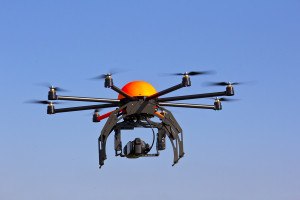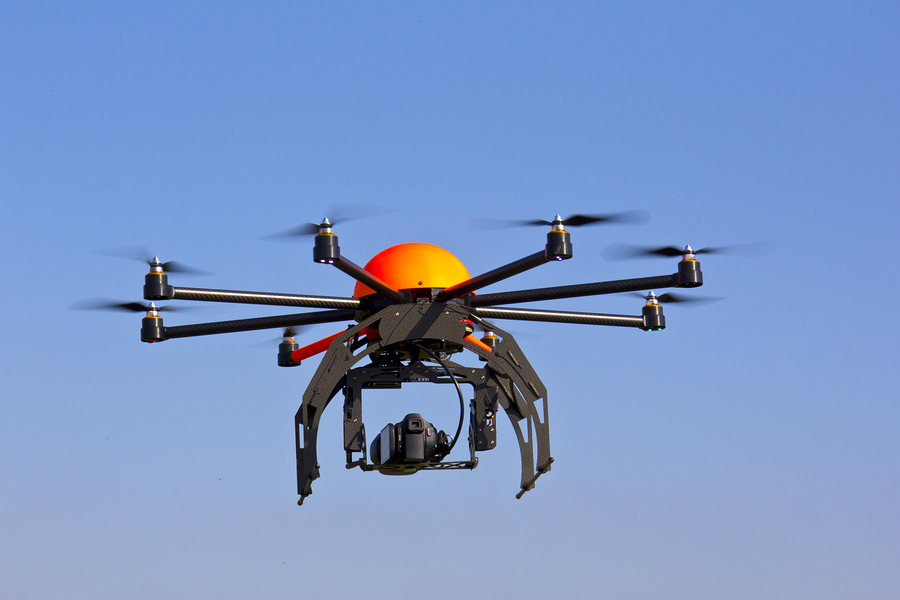As the popularity of remote-controlled, camera-equipped drones continues to rise, enthusiasts in Wichita say it’s time for the federal government to come up with some common-sense rules that can keep pace with the rapidly evolving technology.
While it’s technically legal to fly a drone in the airspace above a neighbor’s home, flying the same drone around a home to create a real estate listing can land the operator a big fine from the Federal Aviation Administration, The Wichita Eagle reported.
 Personal drones – typically 5-pound, remote-controlled devices that look like little helicopters – can cost as little as $1,000 to set up, and their use has been growing exponentially.
Personal drones – typically 5-pound, remote-controlled devices that look like little helicopters – can cost as little as $1,000 to set up, and their use has been growing exponentially.
One of the FAA’s main concerns about drones is that they could potentially interfere with an already crowded airspace if not properly regulated, said Les Dorr, a spokesman for the agency.
The FAA remains strict on its guidelines. Unmanned aircraft systems such as drones may be legally operated only for hobby or recreational purposes, while all potential commercial operations must have a certified aircraft, a licensed pilot and approval from the FAA, Dorr said.
The Future of Drone Use in the Insurance Industry
Only two drone models – Boeing and the Insitu Group’s ScanEagle, and AeroVironment’s Puma – are certified to operate commercially. Both models previously operated only in Arctic regions, but on Tuesday the FAA granted approval for BP to use the Puma in Alaska.
Both models cost in the tens of thousands of dollars and look more like a standard airplane than a quadricopter.
In its 2012 FAA Modernization and Reform Act, Congress mandated the agency have a plan for the “safe integration of civil unmanned aircraft systems” into the national airspace by Sept. 30, 2015.
The integration of drones will be incremental, Dorr said, and is not expected to be fully realized by the September date.
“It doesn’t mean everyone is going to be able to fly whatever they want whenever they want,” he said.
In addition to safety issues, drone usage comes with a host of privacy concerns, said Patrick Hughes of the Adam Jones law firm in Wichita.
The problem for the courts, Hughes said, is that the technology is so new that there is little prior case history on which to base legal judgments. Legal guidelines likely will be established with either upcoming FAA regulations or federal legislation, he said.
“We are either going to have to simply accept that the benefits of this particular type of aviation are worth the inconveniences it might cause some people and leave things where they are, or collectively continue to be uncomfortable about it, or we’re going to have to do something different,” Hughes said.
Was this article valuable?
Here are more articles you may enjoy.


 Consulting Firm McKinsey to Pay $650M to Resolve Criminal Opioid Probe
Consulting Firm McKinsey to Pay $650M to Resolve Criminal Opioid Probe  Nearly 1,000 Feared Dead After Cyclone Hits France’s Mayotte
Nearly 1,000 Feared Dead After Cyclone Hits France’s Mayotte  Coming Soon to Florida: New State-Fed Program to Elevate Homes in Flood Zones
Coming Soon to Florida: New State-Fed Program to Elevate Homes in Flood Zones  AccuWeather’s US Winter Forecast Calls for a Temperature Roller Coaster
AccuWeather’s US Winter Forecast Calls for a Temperature Roller Coaster 